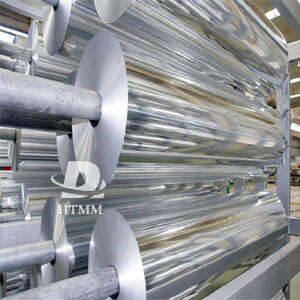We look at the manufacturing process of alu foil. A large piece of almost pure aluminum block is rolled through a large steel roll several times. The thickness of the aluminum block will become thinner and the aluminum block will become longer. Lubricant was added to facilitate operation. The thickness is thinned each time it passes through the roll continuously. Repeat rolling until the thickness of aluminum foil is reached, and then cut the large plate into the desired width.
This may seem simple, but the actual process can be difficult. For example, when aluminum is rolled, it heats up. If the temperature is too high, it will stick to the roll, so the pressure of the roll must be carefully controlled.
Once the aluminum plate is 5 mm thick, it must be rolled again in the cold rolling stage. First of all, the plate is produced into coils, and then sent to the cold rolling mill for the final rolling.
It is at this point that the gloss of aluminum becomes matt . Because the current aluminum foil is too thin, the tension needed to transport aluminum through cold rollers can easily break aluminum. As a result, the difficulty of production has doubled. The aluminum surface in contact with the steel roll becomes smoother and shiny , while the aluminum surface in contact with the aluminum becomes matte.






